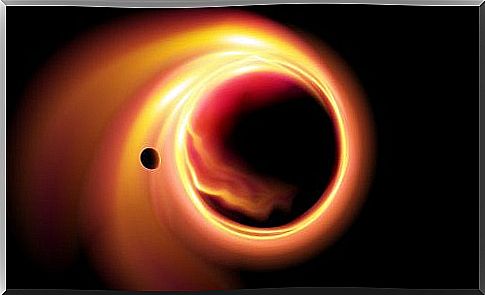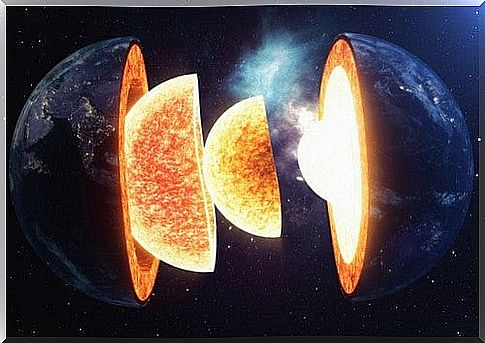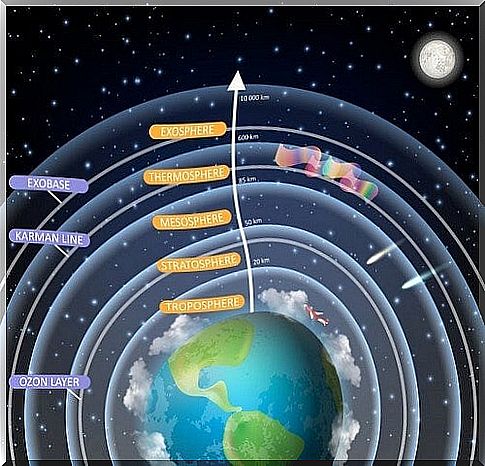The Earth: Its Origins Explained In Simple Words

Our beloved mother Earth was born about 4.470 million years ago. Much has changed since then, when it was still nothing more than an agglomeration of rocks and gas. High temperatures, pressures, explosions… We will try to summarize in simple words how the Earth is supposed to have originated.
It is thought that about 13,800 million years ago a terrible explosion, known as the “Big Bang”, took place in which a large amount of matter was thrown in all directions. Over time, this matter has concentrated in agglomerations, giving rise to suns, stars, planets, nebulae… until galaxies are formed.
How planets are born
Therefore, our planet and the Sun originated from this same cloud of stardust. The force of gravity exerted on it caused the first to agglomerate into small asteroids and, subsequently, into increasingly larger rocks which, merging, gave rise to the primitive planets. And, as if it were a cosmic game of marbles, they started bumping into each other.

The energy released by the clashes and the elements that made up the primitive planets caused an increase in the temperature inside, melting the rocks. Over time, the outermost layers of the Earth began to cool, although its core remained glowing.
… And how the Earth was born
Located at the right distance from the Sun, to the point of facilitating the aforementioned cooling, the Earth was still an inhospitable and hostile planet. Without the gaseous atmosphere, washed by rivers of lava and sprinkled with volcanic eruptions. Yet this lava has done nothing but contribute to the thickening of the earth’s crust.
As a result of volcanic eruptions, the primordial gases thus freed themselves from the surface, then giving rise to the atmosphere. At the time, however, the latter was composed of hydrogen, helium, methane, ammonia, noble gases and some rare particles of oxygen.
From this first form of oxygen and from atmospheric hydrogen subjected to optimal conditions of pressure and temperature, the condensation of the precious water molecule that made life on our planet possible. Indeed, today we cannot conceive of life without the presence of water.
Land, sea and air fought each other for a while, until each element found its place and organized themselves into layers ; an incandescent liquid core, sea surface and earth’s crust, and gaseous atmosphere, make the birth of the Earth an example that is always and in any case unique, thanks to its organization in layers.
Formation layers of the planet Earth
The structure of the Earth is what makes it so special. The 4-layer formation, characteristic of our planet, with its substrates and its interconnections between them, not only makes life on the planet possible, but makes the Earth itself alive, and in constant transformation.

The geosphere is the layer that includes the center of the Earth, the core, up to the earth’s surface. Nothing less than with a radius of 6356 Km. Furthermore, it is formed by the substrates: core, internal and external, mantle, lower, middle and upper, oceanic and continental barks.
The biosphere is the layer of the earth that hosts the set of living beings that populate our planet. Rivers, seas, mountains, lakes, deserts… It extends from 1 km deep to 10 km above sea level.
The hydrosphere is the layer of the Earth that embraces the water below and above the earth’s crust : seas, lakes, rivers, oceans, ice caps, water vapor and aquifers. It covers 70% of the earth’s surface, even if only 3% of the water in liquid form is sweet and is involved in a continuous cycle, made up of three states: liquid, solid and gaseous.
The atmosphere is the gaseous layer which, in the shape of a dome, is the culmination of terrestrial formation. It protects the planet from the impact of the sun’s rays, from small asteroids and creates the optimal environment for life, thanks to its composition, rich in O2 (21%). This gaseous percentage varies according to the layer and divides the atmosphere into substrates: troposphere, stratosphere, mesosphere, ionosphere and exosphere, for a total radius of 10,000 km.









